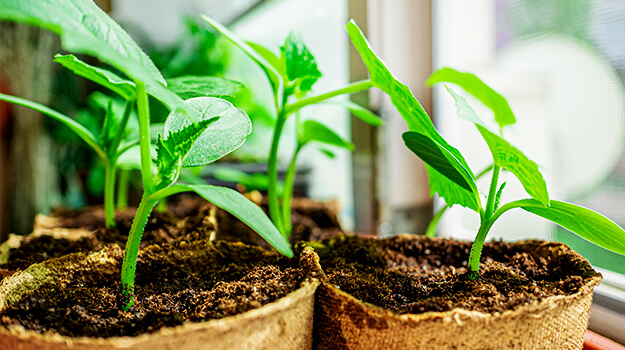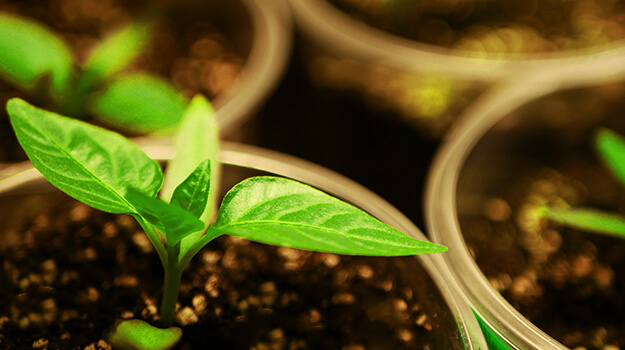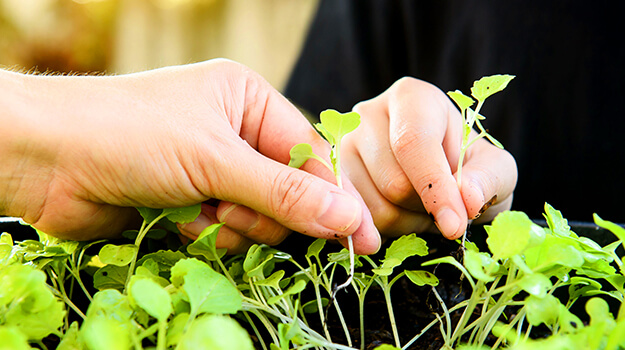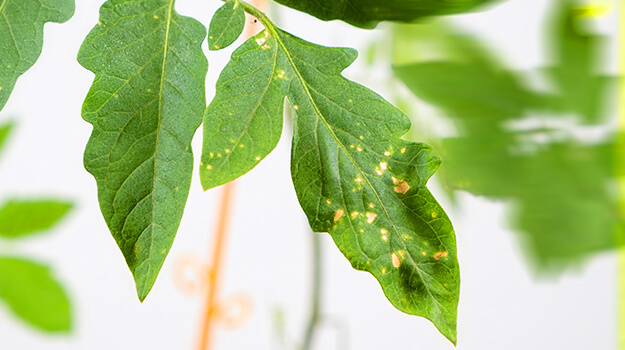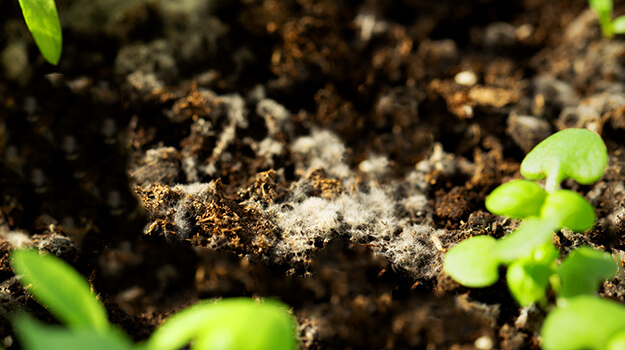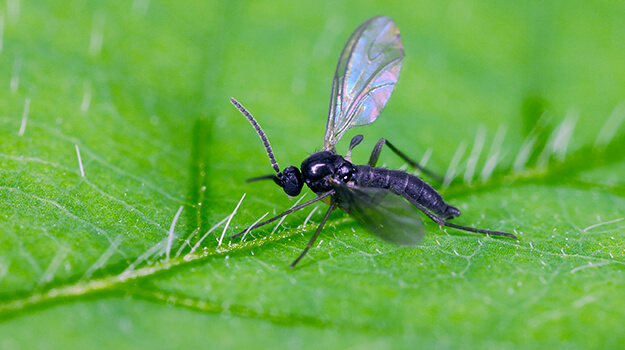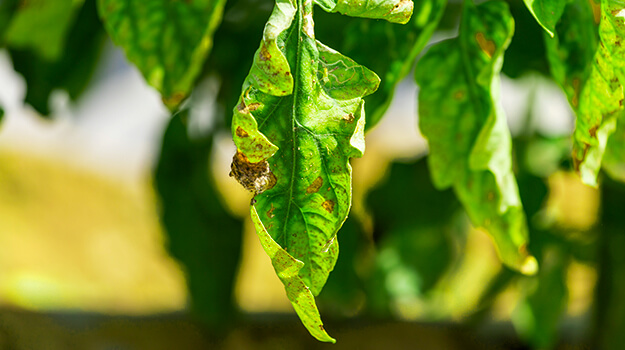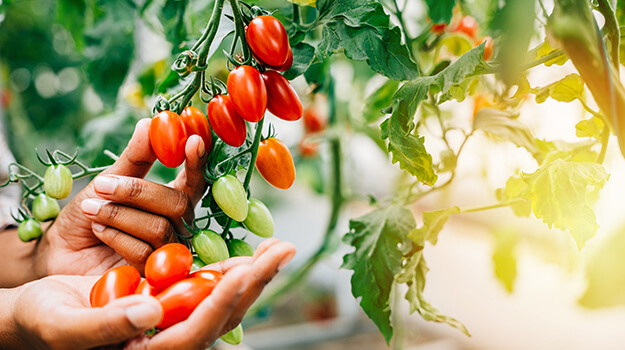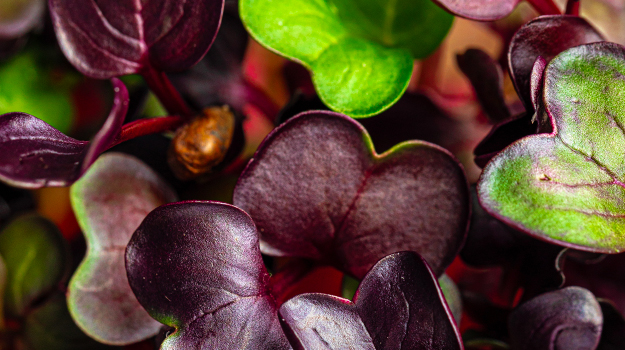Easy to do, starting seeds usually yields excellent results. It's a rewarding way to grow a large number of plants that you'll cherish until the day they make their way into the garden.
Sometimes, however, things don't go exactly as you'd hoped, even if your seedlings appear to be growing in the best possible conditions. It's best to act quickly when things get complicated because these tiny plants can be fickle!
Every problem has a solution… At least, almost every problem.
How to successfully start seeds
Why aren't my seeds germinating?
Be patient! Germination time varies from one plant to another. Check the seed packet to find out how many days it takes for the plant to germinate. Keep the soil moist at all times. Use a spray bottle to avoid displacing the seeds.
If you still don’t see any small sprouts after a certain time, the quality of the seeds, their freshness or the way they were stored may be the cause. Get fresh seeds. At this stage of the process, the season is still young, so there's no need to get discouraged!
Why aren't my seedlings growing?
Make sure you're neither underwatering nor overwatering! The potting soil should be constantly moist, but not soggy. Excess water should drain well and be removed from the tray.
Check the light level! A lack of light will slow seedling growth. Grow lights spare you from having to move your seedlings from room to room looking for adequate light.
Check the temperature! A temperature below 23 °C can slow seedling development. Keep your seedlings warm with a heating mat.
Your seedlings may be hungry! As soon as the first true leaves appear, you can use a growth stimulant like ROOT BOOSTER 5-15-5 to accelerate root development and strengthen plants.
Some plants take longer to germinate and grow than others!
TIP: Having trouble finding the right watering balance? Here's our best advice: keep the soil evenly moist at all times but allow the surface to dry out between waterings. This is achieved by watering from below!
Why are my seedlings wilting?
They're thirsty!
If your seedlings look wilted, their leaves are limp, yellow, pale brown or dried out, and the soil is dry, water them!
Seedlings are no different from other plants. When they're thirsty, their leaves lose their vitality and lie flat on the soil. A more significant lack of water will cause them to turn yellow, then brown, and dry out.
Water deeply but gently (ideally with a spray bottle or a watering can with a rose). Make sure to keep the soil moist at all times, even if it means watering more than once a day. Water whenever the soil feels dry to the touch or begins to grow pale.
PRO TIP: For efficient and hassle-free watering, place your seedling pots in a tray. Add lukewarm water and let the potting mix absorb what it needs. Remove excess water after about twenty minutes. Never let water stand under your pots after watering this way. This applies to all your plants!
Why are my seedlings all tangled up?
The seeds have germinated in large numbers and you're about to celebrate your success? Not so fast!
Whether you planted too many seeds or not, the result is the same. Your seedlings are growing densely and tangled together because there are too many of them for the space available in their pot.
You have two options: thin them out by removing the weakest shoots to keep only the recommended number, or transplant them into another container, which will give them the space they need to grow well... until it's time to repot them!
PRO TIP: If you've chosen to thin out the seedlings, cut the stems of the seedlings you want to remove with scissors. Pulling on the plants would disturb and even damage the plants you want to keep.
Don't throw away the shoots you just cut! Most vegetables can be grown as microgreens and are packed with vitamins. This first harvest can be added to your salads, sandwiches, burgers, soups, omelets, etc.
Discover all the secrets of microgreens here: Microgreens: Easy to grow at home
My seedlings are droopy, thinner, darker or pinched at the base...
It happened overnight. Your seedlings are drooping, their leaves are lying flat on the soil, their base is dark and looks pinched. Their worrying appearance indicates that your seedlings are suffering from a fungal disease called damping-off.
Unfortunately, they cannot be saved. However, it's not too late to start again. Disinfect your pots thoroughly and, above all, don't reuse your soil. Start with new, aerated and sterile potting soil specially formulated for seedlings.
PRO TIP: An excess of moisture or nutrients creates conditions that promote damping-off. Seedlings appreciate soil that is constantly moist, but never soggy, and that allows air to circulate!
Why are my seedlings going limp?
Your seedlings are going limp? They're long and pale, and their leaves are small?
Your seedlings aren't getting enough light. Move them to a windowsill or, better yet, get grow lights!
If your limp seedlings are dark green... the heat is too intense. Make sure to lower the temperature in the room, especially at night.
Why are the leaves of my seedlings spotted or damaged?
This is a sign of nutrient deficiency or inadequate watering. If the seedlings already have 4 to 6 leaves, it's time to start fertilizing.
Before fertilizing, however, give your seedlings a chance to strengthen by making sure they have an environment conducive to their proper development. Do not fertilize seedlings that are stressed or have dried out.
Why is there mold on my soil?
Mold is a sign that something is wrong. It won't cause your seedlings’ demise, but the underlying problems certainly will if they aren't addressed quickly.
Here are 3 problems that can lead to mold:
- Overwatering: The soil should never be soggy. To solve the problem, always make sure to drain excess water when watering and allow the soil to dry out more between waterings.
- Crowded planting: Thin out or transplant excess seedlings.
- Insufficient air circulation: If your seedlings are covered with a lid or clear film, remove it. Also improve air circulation in the room by leaving the door of the mini greenhouse or room open and running an oscillating fan on a low setting.
Why are there flies around my seedlings?
Fungus gnats get their name from the fact that their larvae live in potting soils and other substrates... and feed on the roots of your plants.
While there's no need to worry when you see a few of them, an infestation can kill your young plants. Fungus gnats don't live more than 5 days, but that's enough time for them to reproduce.
Again, you need to start by addressing the problem at its source: overly moist potting soil. Fungus gnats like to lay their eggs in moist soil. Here are some tips to remedy the problem.
- Water your seedlings from the base and let the surface of the soil dry out between waterings. Ensure good air circulation between your plants so the soil can dry between waterings. Space the plants apart and use a fan to ensure good air circulation.
- Never let excess water stagnate in saucers or growing trays.
- Sow in sterile growing medium (a few minutes in the microwave or a hot oven is enough!).
- Clean regularly! Don't leave dead leaves or other organic debris on the soil. This encourages fungus and fungus gnats.
- Yellow sticky traps or diatomaceous earth are effective in controlling fungus gnats.
Why are my seedling leaves curling or rolling?
The leaves are wilting, curling or rolling... you need to find the cause and fix it quickly. Here, you have a choice...
- Lack of water: If this is the cause, then the deficiency is severe! Water dehydrated seedlings immediately. It may be too late to save them.
- Spider mites: Observe carefully. If you see tiny webs or spots between the leaf veins, you may have found the culprits. Increase humidity by using a humidifier or placing your seedlings in a mini greenhouse. If the infestation is severe, treat your plants with Wilson BUG-X OUT Insecticidal Soap or neem oil.
- Fertilizer burn: Always use an organic fertilizer.

